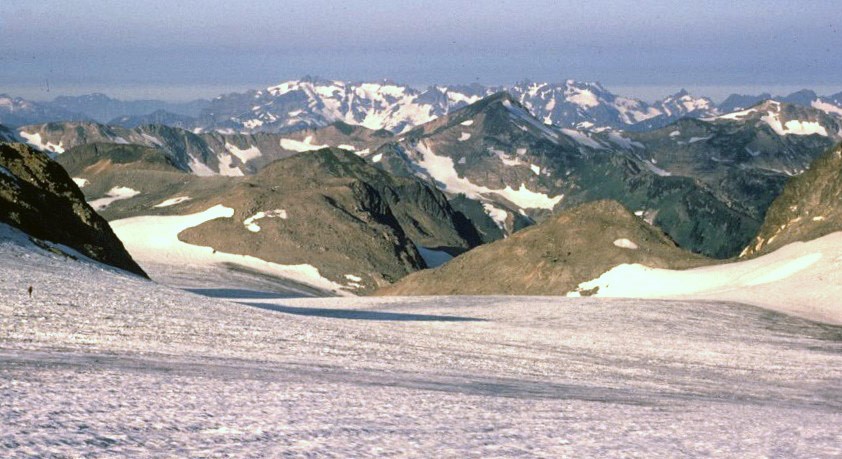World’s one of the most amazing and picturesque mountain region, Canada is filled with glaciers. By the end of 21st century, almost 70% of the glaciers will fade away in Canada. The continuously warming temperature is posing threat for the glaciers in Western Canada. In the rocky mountain region (drier interior), almost 90% of the glaciers are likely to disappear by 2100 although the mountains in the coastal region (wetter part) of north-western British Columbia is anticipated to fade about 50% of its volume. The glaciers are essential for the region as they not only cater to the water supply and agriculture but also attract tourists from all over the world.
According to a research study, increasing temperatures are causing danger for glaciers in Western Canada but the glaciers are not vanishing as the same pace. The fading of glaciers are signs of worry although large amount of rainfall offset the impact of glacier loss. It is believed that the freshwater ecosystem is most harshly affected due to climatic change. However, in late summers, the melting glaciers are the source of cool and abundant water supply to different regions. Glaciers are considered to be the regulator for freshwater ecosystems. If the glaciers vanish, the streams will become more warm which will thereby affect the fresh water habitat. British Columbia and Alberta possesses more than 17,000 glaciers that play a vital role in production of hydroelectric power.
Glaciers are highly susceptible to climate change. Over the past 40 years, other glaciers like Andes lost almost 30-5-% of its surface area. Even some parts of Himalayan glaciers are also experiencing meltdown. Athabasca glacier in North America which is largely visited by tourists is losing almost 5 meters of ice each year and is in the alarming zone to disappear within few decades. Every year the glacier receives seven meters of snowfall which is eventually shrinking.
Although the increase in sea level due to melting of glacier ice will be modest but it will have other impacts too. Presently, the glaciers are shrinking and the water flow is rising. Gradually, the glaciers will come to an end and the entire ecosystem will be transformed completely. Besides, it will also create an adverse impact on the fisheries.
According to a study, the Canada’s glacier meltdown will be at its peak during the period 2020 to 2040. This melting is likely to stimulate the stream flows in Athabasca, Columbia and Saskatchewan River basins. The latest study determines the impact of environmental pollution on individual glaciers. Given the current glacier coverage, some amount of ice is likely to remain by the end of this century despite subject to the worst scenario of high carbon dioxide emission. Even if measures are adopted all over the world to control the emission of greenhouse gases, there is enough of carbon dioxide in the atmosphere to spark global warming for few decades.
According to a research study, increasing temperatures are causing danger for glaciers in Western Canada but the glaciers are not vanishing as the same pace. The fading of glaciers are signs of worry although large amount of rainfall offset the impact of glacier loss. It is believed that the freshwater ecosystem is most harshly affected due to climatic change. However, in late summers, the melting glaciers are the source of cool and abundant water supply to different regions. Glaciers are considered to be the regulator for freshwater ecosystems. If the glaciers vanish, the streams will become more warm which will thereby affect the fresh water habitat. British Columbia and Alberta possesses more than 17,000 glaciers that play a vital role in production of hydroelectric power.
Glaciers are highly susceptible to climate change. Over the past 40 years, other glaciers like Andes lost almost 30-5-% of its surface area. Even some parts of Himalayan glaciers are also experiencing meltdown. Athabasca glacier in North America which is largely visited by tourists is losing almost 5 meters of ice each year and is in the alarming zone to disappear within few decades. Every year the glacier receives seven meters of snowfall which is eventually shrinking.
Although the increase in sea level due to melting of glacier ice will be modest but it will have other impacts too. Presently, the glaciers are shrinking and the water flow is rising. Gradually, the glaciers will come to an end and the entire ecosystem will be transformed completely. Besides, it will also create an adverse impact on the fisheries.
According to a study, the Canada’s glacier meltdown will be at its peak during the period 2020 to 2040. This melting is likely to stimulate the stream flows in Athabasca, Columbia and Saskatchewan River basins. The latest study determines the impact of environmental pollution on individual glaciers. Given the current glacier coverage, some amount of ice is likely to remain by the end of this century despite subject to the worst scenario of high carbon dioxide emission. Even if measures are adopted all over the world to control the emission of greenhouse gases, there is enough of carbon dioxide in the atmosphere to spark global warming for few decades.





